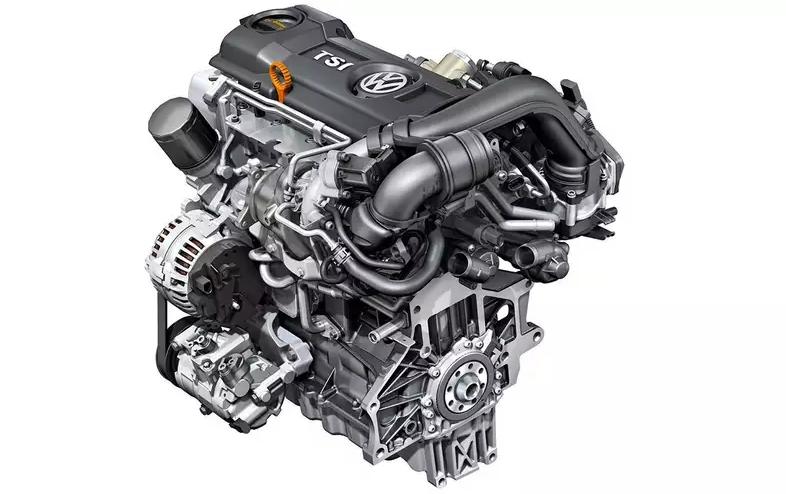
Should we be afraid of turbocharged engines? We explain the reasons for their unreliability and dispel myths.
The analysis of the secondary market leaves no doubts: the buyer, when buying a car, in the overwhelming majority of cases chooses a car with an atmospheric engine. Though at comparable prices a turbo engine is more economical and powerful.
This is more true for moderately priced cars. In the premium segment, the preferences are not so obvious – wealthy buyers do not disdain even biturbo engines.
The main losers
In Europe, the “turbo insurance effect” was not observed – the transition to the “turbo” was gradual and smooth, although in the 1980s the turbines were very capricious. Specialized services for turbo engines and their components did not appear immediately. And there expensive repairs do not always guarantee quality.
Meanwhile, with the advent of Euro-5 environmental standards (in the European Union since 2009), supercharged engines became the easiest and most efficient solution for all manufacturers. And Euro-6 turned out to be even a difficult level for atmospheric engines.
A powerful wave of downsizing (reduction of the working volume of engines and reduction of their dimensions with increased performance, often with the help of turbocharging) rose fifteen years ago. Just twenty years earlier, a liter of power under 100 hp/L was only found in sports cars. Today it is a common figure for relatively simple and mass-produced models.
On this wave, almost all factories have released a lot of turbo engines. Some of them were not very successful. Whether the lack of engineering experience has affected (all new engines are much more complicated than the previous ones), or the haste in development. The list of universally recognized “losers” is quite long.
The most famous failed engines are:
- Opel’s three-cylinder 1.0 R3,
- Ford’s 1.0 EcoBoost, which suffered greatly from overheating,
- “Innovation 2007.” 1.4 TSI/TFSI Volkswagen/Audi
- BMW engines of the N45 and N46 families from 2001-2011,
- winner of numerous “Engine of the Year” awards 1.6 THP (EP6), created by PSA together with BMW and named Prince’s own.
Local punctures have happened for Mercedes, Toyota, and Renault as well. All turbocharged cars had advanced performance, but that was accompanied by a decline in reliability.
Of course, not all engines of a certain family or series break down prematurely and prematurely, but only certain specimens. Statistics are gradually accumulated: what breaks down most often and why. Thousands of other exactly the same engines successfully work off the declared service life – and even more, but all of them end up ruining their reputations.
Main Problems
What happened? Motorists, under pressure from environmental regulations, were forced to choose an unprofitable way in terms of reliability – a combination of increasing pressure in the cylinders (increasing temperatures and mechanical loads) with a lighter connecting rod and piston group (reducing the size and weight of the elements for the sake of lower inertial loads). The design safety margin of many loaded parts decreased – by some estimates, by about 40%. This was accompanied by a general complication of the design for the same purpose of optimizing the combustion process and minimizing harmful emissions. For example, the BMW-PEGEOUT-CITROEN Prince, which debuted in the Mini, combined several advanced solutions – a Twin-Scroll turbine, a variable valve timing system, direct injection, and a cooling system with a smart pump and controlled thermostat.
The problems with many turbocharged engines from different companies turned out to be similar, if not identical. Inefficient and not perfected lubrication system, and as a consequence, the tendency to oil starvation, often simultaneously with oil consumption (up to a liter per thousand kilometers). High thermal load (which leads to accelerated degradation of rubber and plastic parts) and sensitivity to fuel quality and octane number (some engines even contraindicated to AI-95). Combined with careless attitude to engine maintenance, the cumulative manifestation was fouling of injectors and valves, deposits in the cylinders and oil channels. The result of contamination ranged from leaks of “everything and everywhere” to deformation of valves, piston burnout, scoring of cylinders and camshafts.
Sometimes it was aggravated by the low service life of the timing chain drive: the chain was stretched much earlier than expected – it was on turbo versions, and the same assembly was working fine on atmospheric trains. Stretched chain could jump a few teeth, which led to a meeting of pistons with valves.
Many units of that “bad” generation were officially not imported over Europe. But the rest was more than enough to accumulate a certain skepticism to all turbocharged engines – with an active discussion on the Internet, where the negative as usual served with a large exaggeration, and the positive is much less interesting.
The turbodiesels have survived the downsizing phase more safely than their gasoline counterparts. The same tendencies were less manifested in them. True, individual problems in the power system were added: incorrect work of clogged injectors led to various fairy-tale finales.
How to live with it?
Now it is very simple. By 2010-2012, all problematic engines have been thoroughly modernized and brought to an acceptable condition. The lubrication system, timing drive (up to the transition from chain to belt), materials and pistons and rings design were improved most often and on a large scale.
And by 2015, almost all “victims of downsizing” have been replaced in the form of engines of new series and generations, in which the previous shortcomings are generally taken into account and corrected. Today’s Volkswagen 1.4 TSI is very different and has no nightmare diseases. The Prince 1.6 THP also has little in common with the original variant, and is still being produced (in China, for local companies) as a new family.
Mileage of 250,000-300,000 kilometers is quite achievable for modern turbo engines, both gasoline and diesel. But all of them like good care: regular cleaning of injectors, timely (and better anticipatory) oil replacement, close attention to the sounds in the valve train. And radiator flushing, something older atmospheres didn’t usually require. And most importantly, use only quality gasoline from proven suppliers, and fill only at gas stations and in no case do not use additives that increase the octane number of gasoline.
